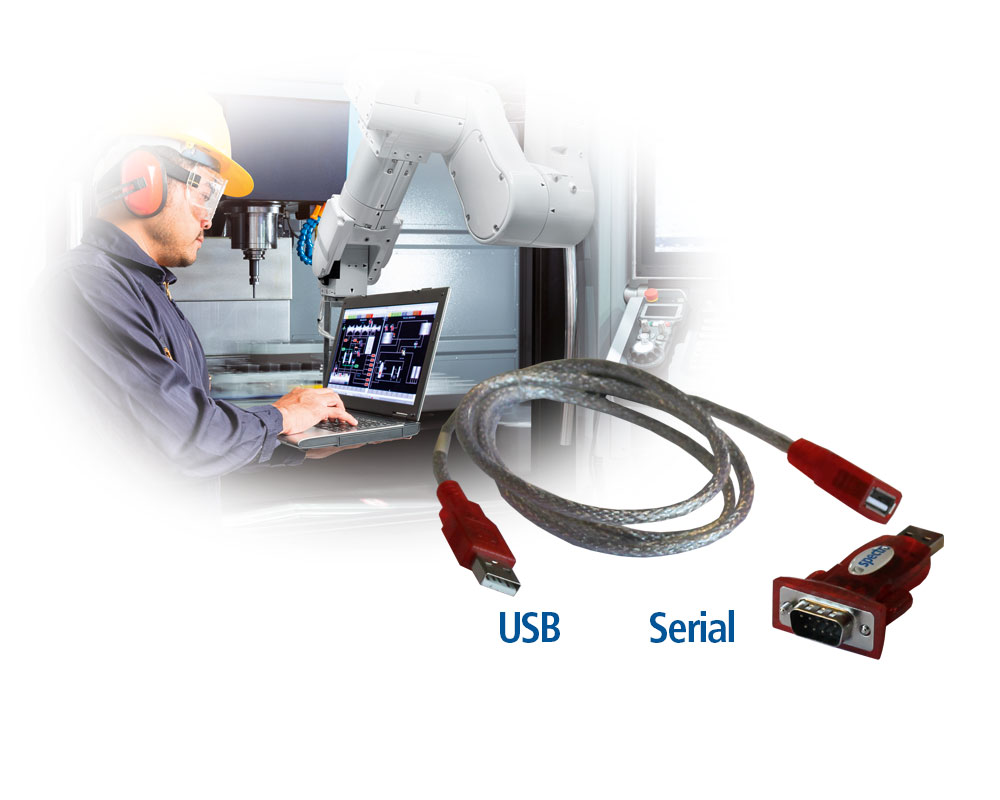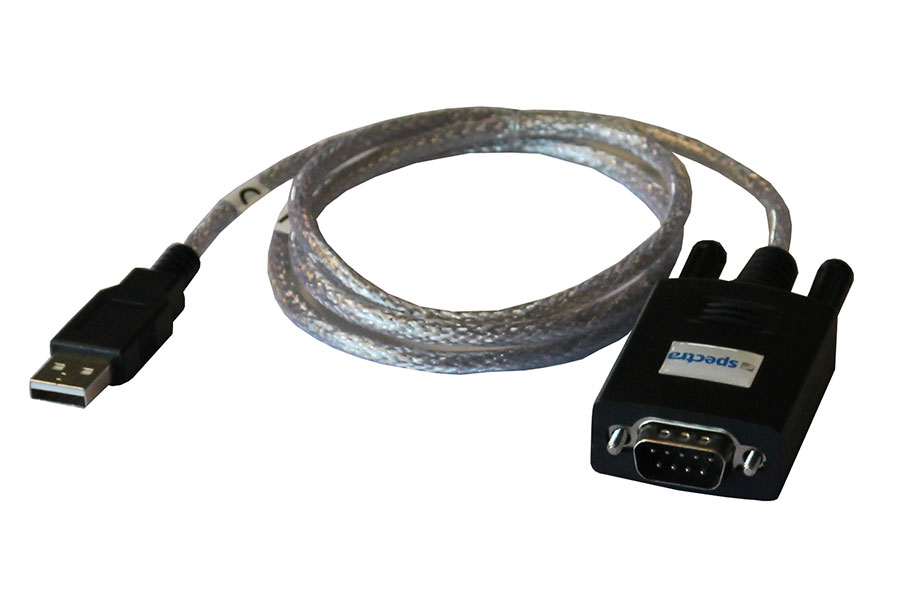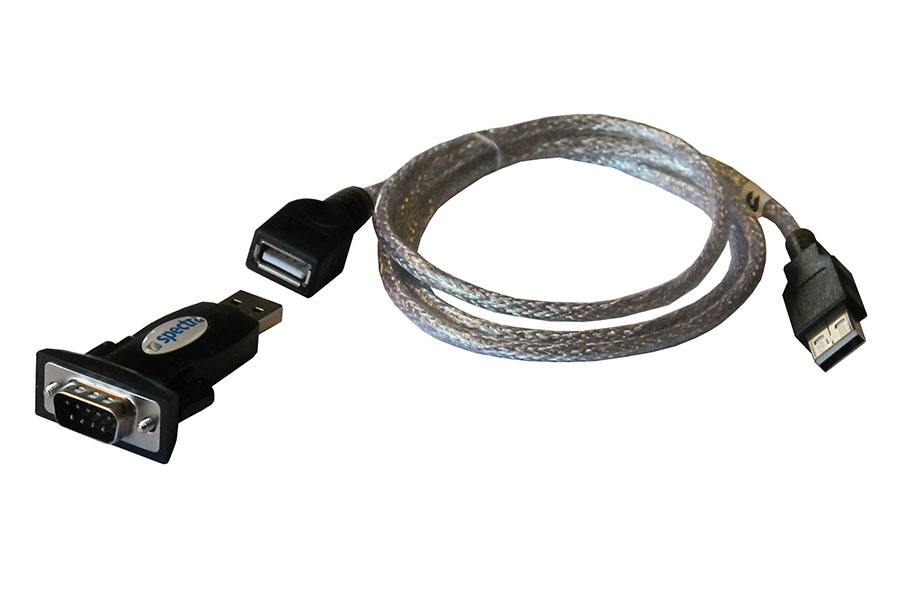Indispensable helpers for the serial interface
The serial interface is far from dead and is still in use as RS-232 or RS-485 in millions of devices. It is used as an interface for occasional device parameterisation, for connecting frequency converters or laboratory scales or also for data transmission from terminal devices to a host PC. If the host PC or the service notebook of the engineer on site does not have its own physical COM interface, small and low-cost USB-serial adapters help to use one of the PC's USB ports and convert it to RS-232 or RS-485.
Similar to a USB stick, the "USB 2.0 to RS-232 converter plug" is only a few centimetres in size. You can plug it directly into the USB port of the Windows PC/notebook, and the Plug & Play technology will automatically install the necessary driver. A few seconds later, the virtual COM port is available in the operating system as e.g. COM3. You select this virtual COM port in the device application software, connect the DB9 socket of the serial device to the DB9 plug of the adapter via a suitable cable and it communicates with the device exactly as if there were a real physical COM port on the PC or notebook.
This usually works straight away. In individual cases, especially if various USB adapters from different manufacturers have already been installed up and down on the PC several times, a question mark or exclamation mark remains in the Windows device manager, which may prevent correct execution. Then you should check whether in the device manager under Connections (COM&LPT) ... USB serial Port (COMx) ... Port settings ... Advanced .. COM port number, the list of COM port entries shows "(already in use)". This indicates "dirt residue" from past driver installations, which you can remove by selecting the relevant COM port in the list and uninstalling the driver without removing the driver files themselves.
The "USB 2.0 to RS-232 converter plug" comes with a 1m USB TypeA extension cable, which is useful if the USB ports of the PC are rather cramped due to existing occupancy with USB sticks, mouse/keyboard adapters, dongles, etc. The same idea underlies the "USB 2.0 to RS-232 converter cable". The "USB 2.0 to RS-232 converter cable" is based on the same idea. It combines the 2 components of the converter plug (adapter + USB cable) in a single inseparable 1m cable including adapter. This somewhat larger version with a somewhat thicker adapter at the serial cable end is much less likely to get "lost" than the small adapter plugs!
The "USB 2.0 to RS-485 converter plug" works completely identically for the RS-485 interface. Here you only have to pay attention to the pin assignment on the SubD-9 connector of the converter plug, as this is not standardised in contrast to RS-232. If necessary, the Data+ and Data- lines of the RS-485 must be led out via the documented pins (usually Pin1 & Pin2) as single wires and connected to the RS-485 device.
All adapters are based on a USB-to-UART chip from FTDI with excellent driver support. The manufacturer also offers drivers for Linux, MAC or Android for free download on the Internet.
Such a "USB-to-serial adapter" belongs to the basic equipment of every technician who has to deal with the serial interface today and perhaps also tomorrow.







